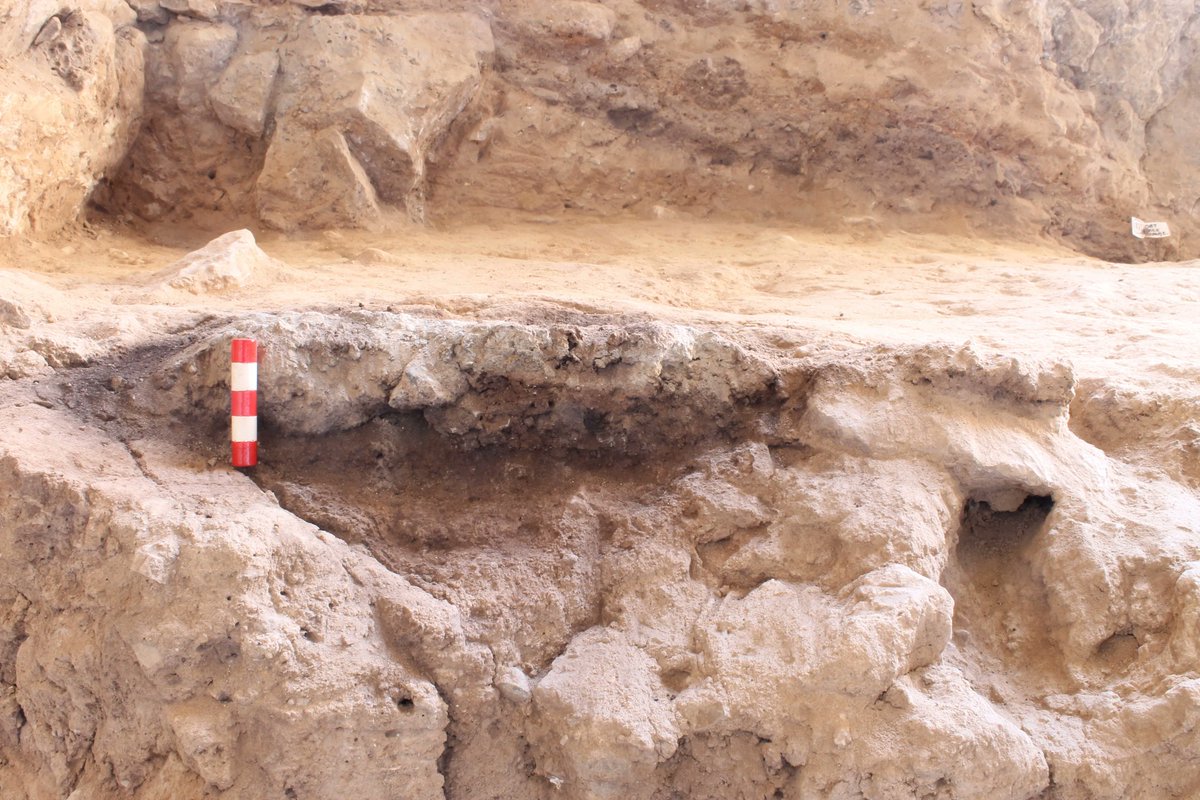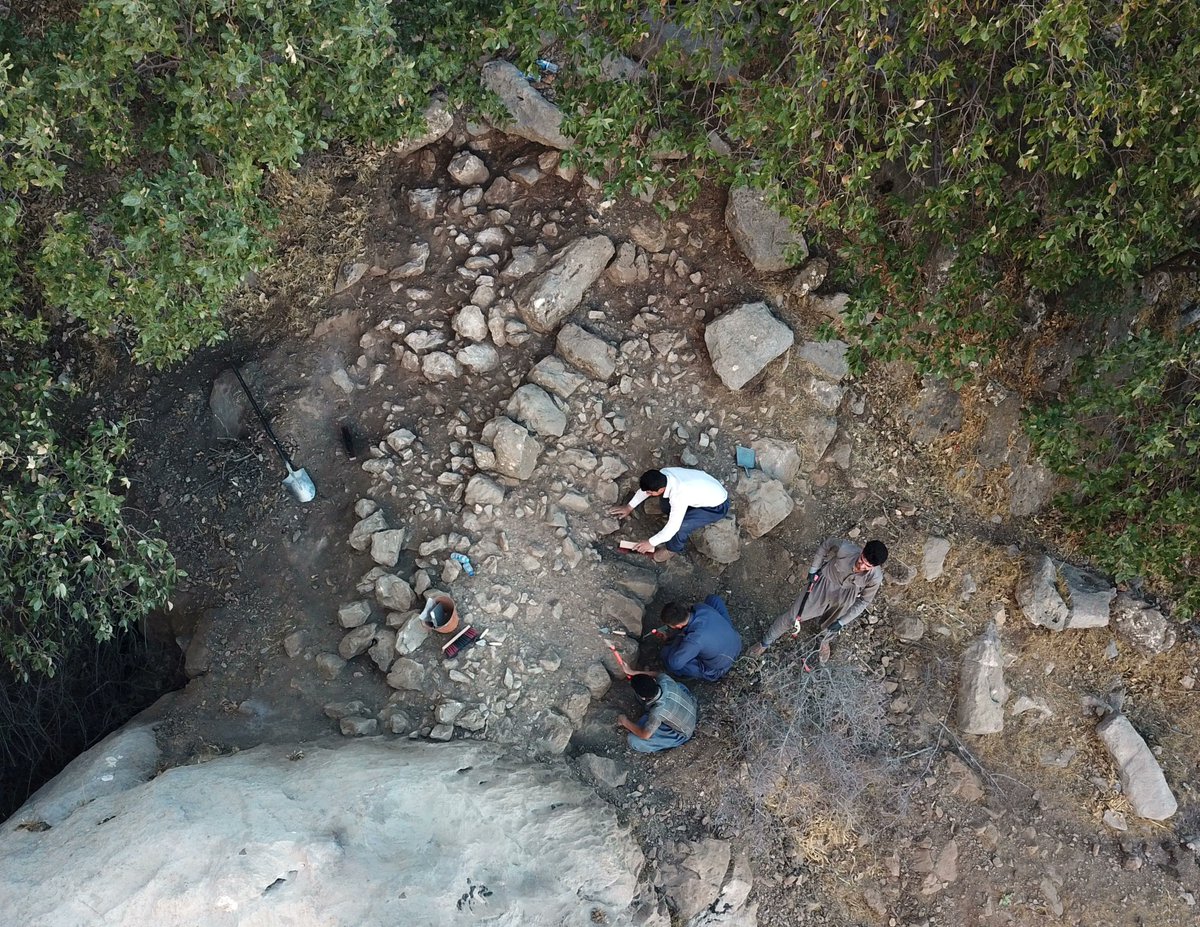
NEW: Neanderthal and early modern human chefs used cooking tricks to make their meals more palatable, analysis of the oldest charred food remains ever found has revealed.
Strap in for a delicious #AntiquityThread 1/14 🧵
Strap in for a delicious #AntiquityThread 1/14 🧵

🥬 Dr @CerenArkbotani and a team of archaeologists wanted to explore the role of plants in the diet of Palaeolithic humans and Neanderthals. Previous research has often focused on the importance of meat in the diet of ancient hunter-gatherers, especially Neanderthals. 2/14
🔬 To investigate this, the team used a scanning electron microscope to analyse ancient charred food on the micrometre scale. The samples came from early modern human and Neanderthal occupations at Shanidar Cave, Iraq, and Franchthi Cave, Greece. 3/14
📷: Location of the sites
📷: Location of the sites

This material spans the past 70,000 years:
🇬🇷 The charred food from Franchthi is the oldest found in Europe, from a hunter-gatherer occupation ~12,000 BP.
🇮🇶 The samples from Shanidar are the oldest in SW Asia, from Neanderthal (70,000 BP) and human (40,000 BP) layers. 4/14
🇬🇷 The charred food from Franchthi is the oldest found in Europe, from a hunter-gatherer occupation ~12,000 BP.
🇮🇶 The samples from Shanidar are the oldest in SW Asia, from Neanderthal (70,000 BP) and human (40,000 BP) layers. 4/14
🥗 The results of this analysis confirmed that plants played a prominent role in the diet of early modern humans and Neanderthals. And these meals used multiple ingredients: wild nuts and grasses were often combined with pulses and wild mustard. 5/14
📷: Samples from Franchthi
📷: Samples from Franchthi

🗨️ “Our work conclusively demonstrates the deep antiquity of plant foods involving more than one ingredient and processed with multiple preparation steps,” said Dr Kabukcu, from @LivUni. 6/14
The team were even able to identify some of the techniques used to prepare this food to make it more palatable. 7/14
📷: A Neanderthal hearth found at Shanidar Cave
📷: A Neanderthal hearth found at Shanidar Cave

Pulses, the most common ingredient identified, have a naturally bitter taste due to the tannins and alkaloids in the seed coats. However clever Palaeolithic chefs used a range of tricks to lower the amount of these harsh-tasting compounds. 8/14
📷: Pulse samples from Shanidar
📷: Pulse samples from Shanidar

🗨️ “Their preparation through soaking and leaching followed by pounding or rough grinding would remove much of the bitter taste,” said Dr Kabukcu. 9/14
🍞 Pounding or grinding would also make it easier for the body to absorb nutrients in the food. It also opens up cooking options – one food deposit from Franchthi Cave consists of a bread-like meal made by grinding seeds into super-fine flour. 10/14
📷: The bread-like food
📷: The bread-like food

However, neither the Neanderthal nor early modern human chefs removed the entire seed coat. This is a process known as hulling and is common in modern agriculture as it almost entirely eliminates the bitter compounds. 11/14
The fact the Palaeolithic people did not hull suggests they wanted to reduce but not eliminate the pulses’ natural bitter taste in their meals. 12/14
🗨️ “This points to cognitive complexity and the development of culinary cultures in which flavours were significant from a very early date,” said Dr Kabukcu. 13/14
📄 Check out the original paper FREE:
Cooking in caves: Palaeolithic carbonised plant food remains from Franchthi and Shanidar -@CerenArkbotani, Chris Hunt, Evan Hill, @_dEmBones, Tim Reynolds, Graeme Barker & Eleni Asouti
doi.org/10.15184/aqy.2…
14/14
🧵
Cooking in caves: Palaeolithic carbonised plant food remains from Franchthi and Shanidar -@CerenArkbotani, Chris Hunt, Evan Hill, @_dEmBones, Tim Reynolds, Graeme Barker & Eleni Asouti
doi.org/10.15184/aqy.2…
14/14
🧵

• • •
Missing some Tweet in this thread? You can try to
force a refresh





















